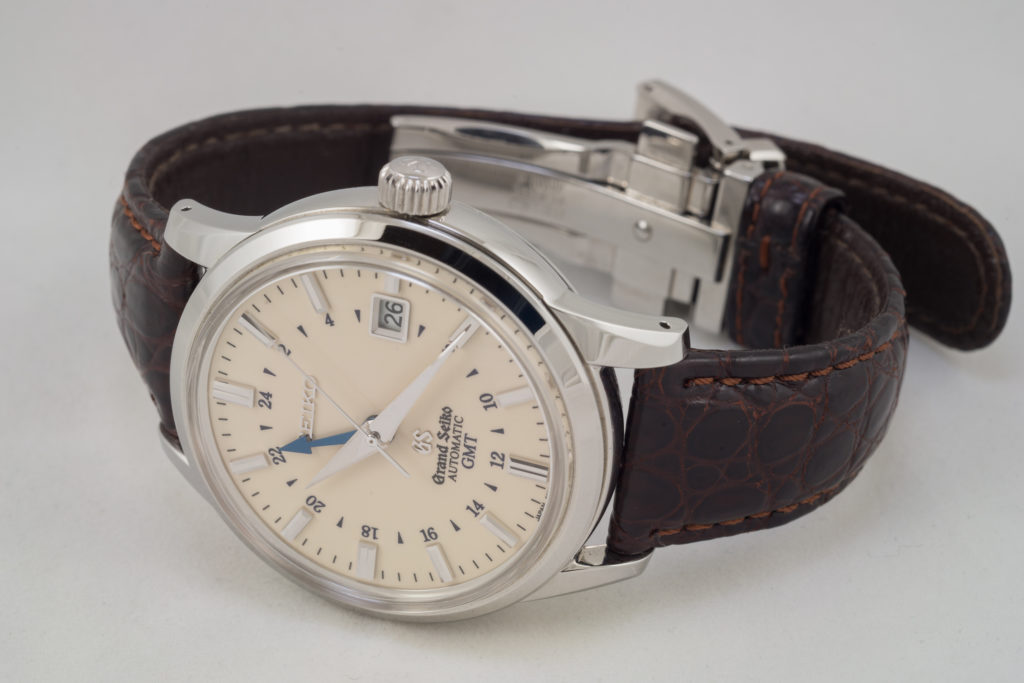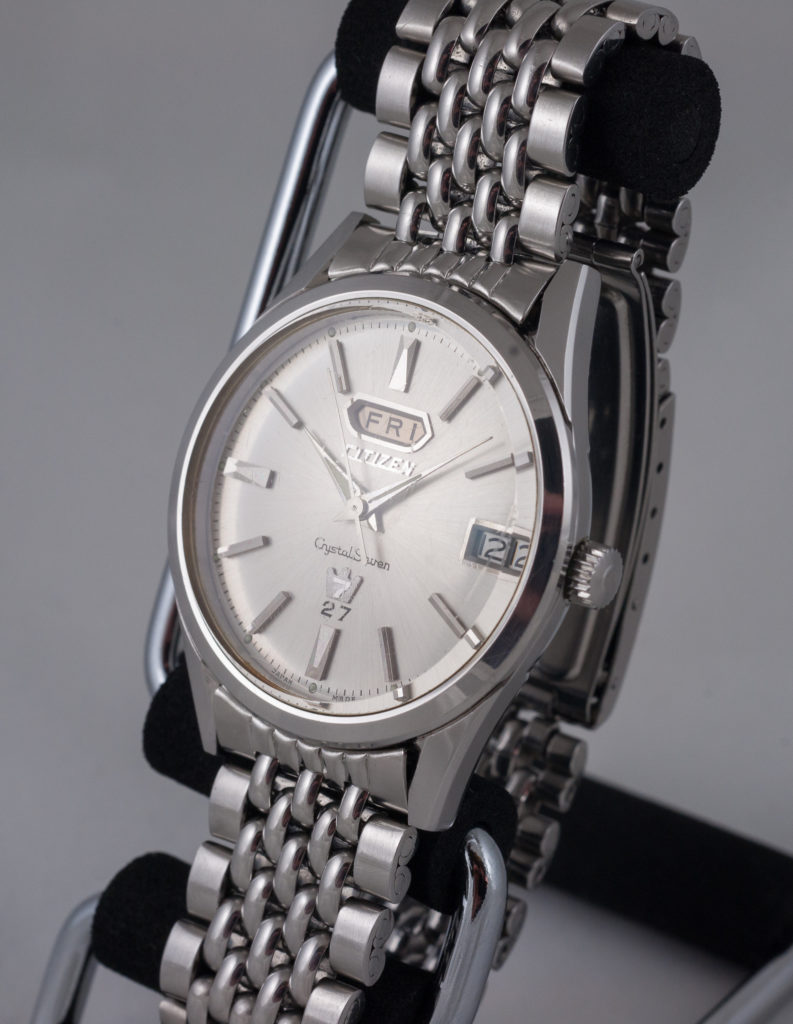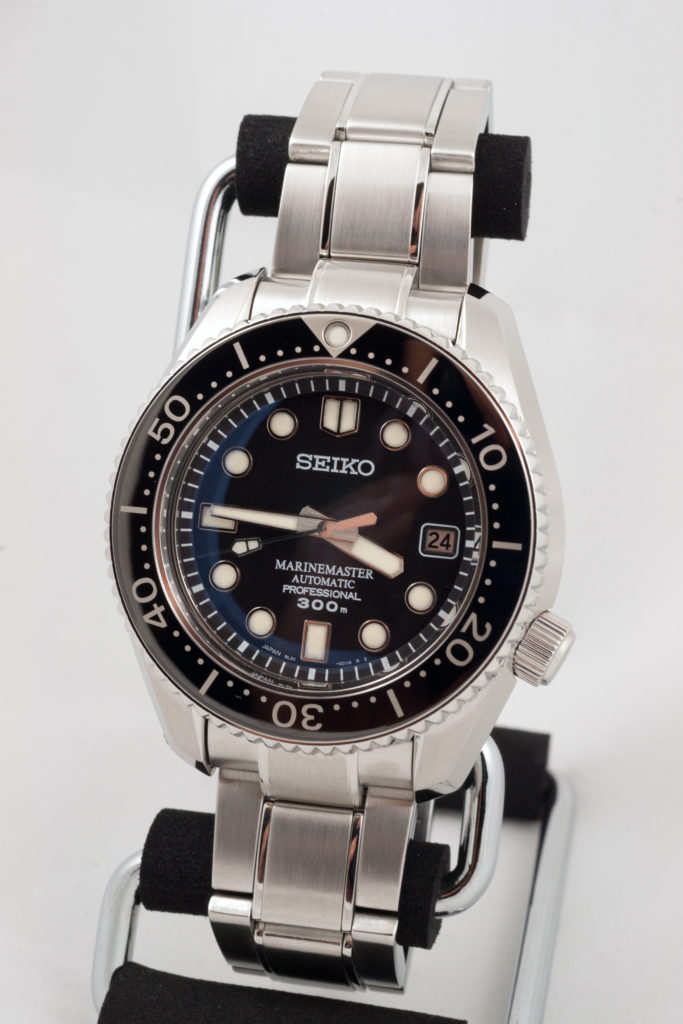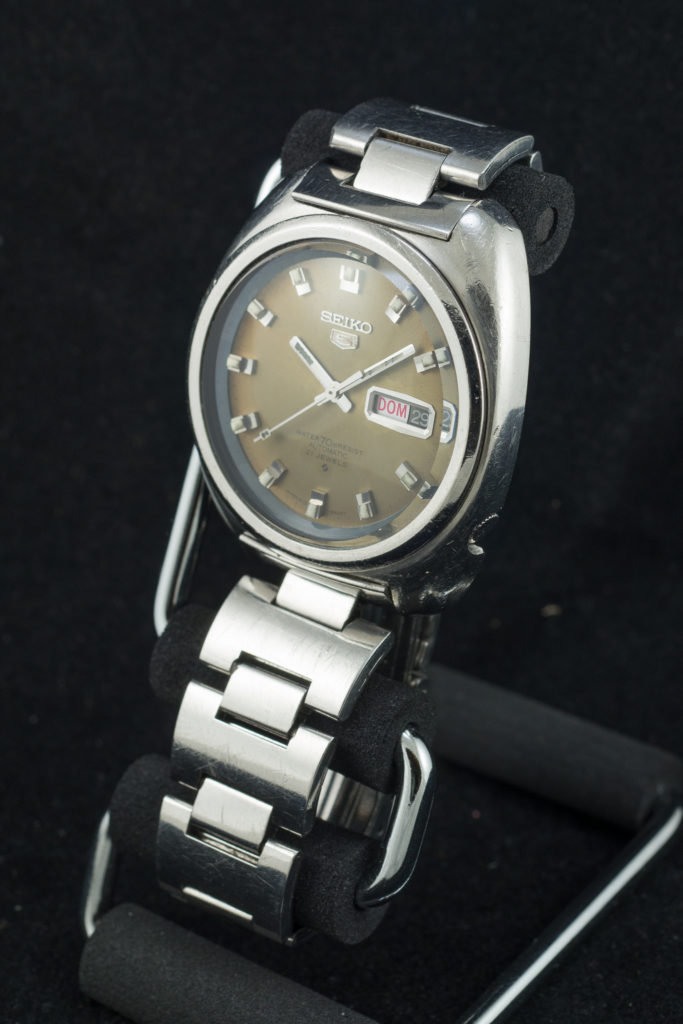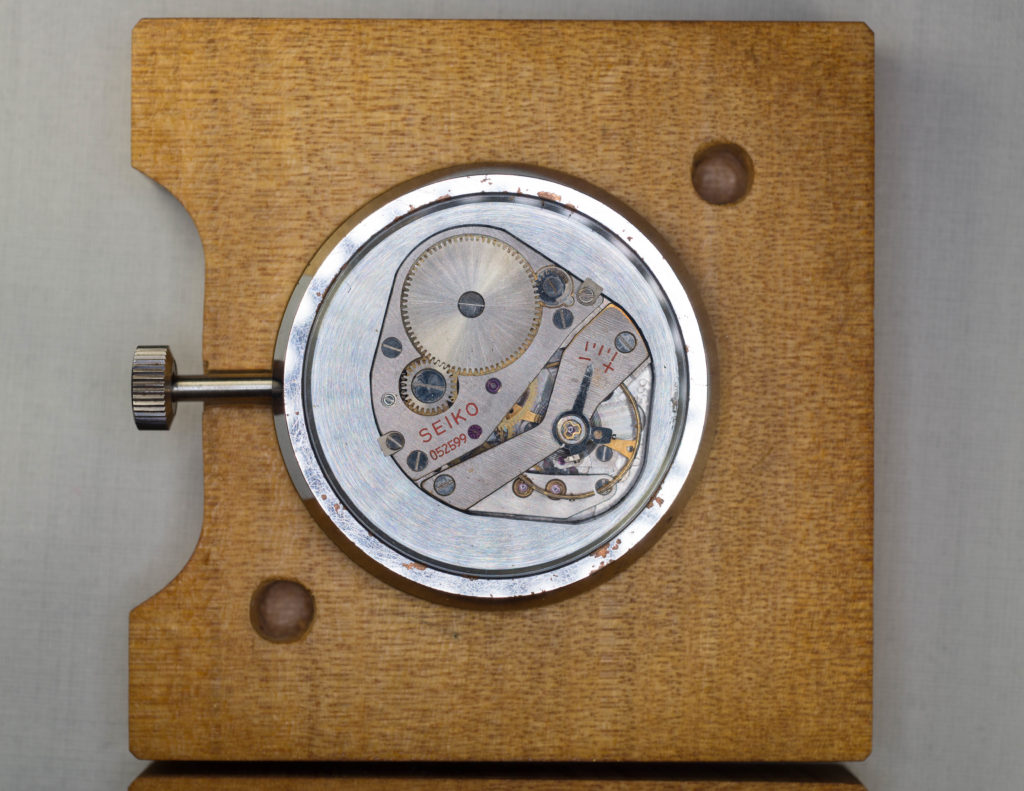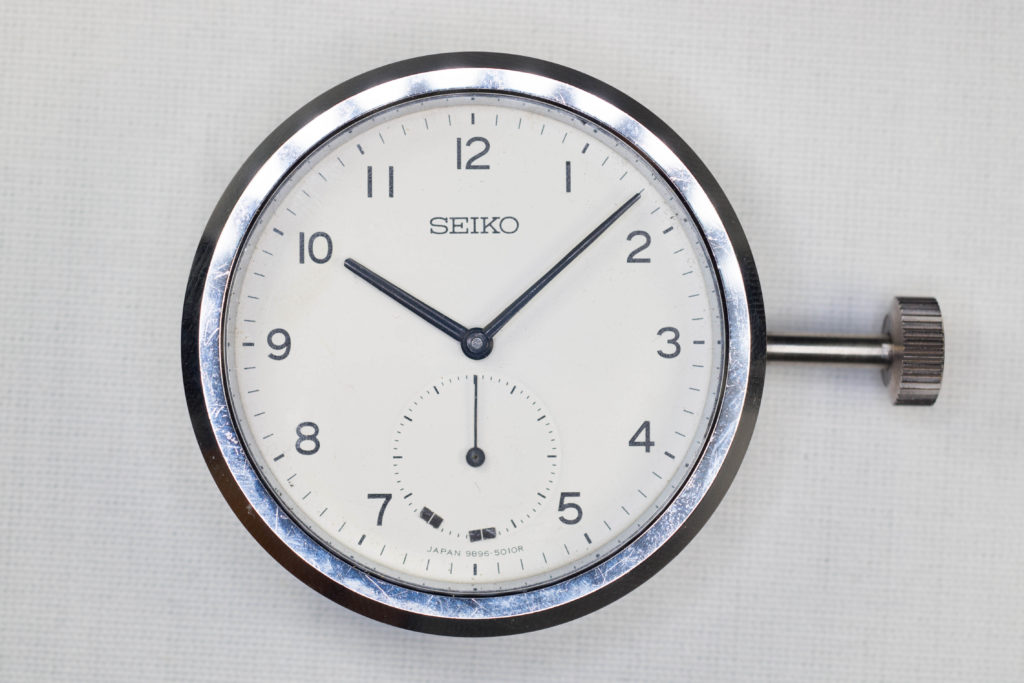Today we introduce a new segment for our blog, called Talking Seiko.
On a regular basis, we will post interviews of collectors, Seiko lovers and connoisseurs to give you their insight into this wonderful world of Seiko.
We decided to begin this segment with the one and only Anthony Kable. If you’ve been into Seiko’s history and vintage Japanese watches, you’ve probably heard of him. You might also know him through his amazing website http://www.plus9time.com , a must-read that should be in every Seiko lovers’ bookmarks !
Anthony is a seasoned collector of everything Seiko related, one of the most knowledgable person on this topic, but also a very nice guy !
We asked him a few questions and we are sure you’ll find his answers very interesting !
How long have you been collecting and how did you get into Japanese watches?
I had various watches throughout high school and these were usually just a cheap Casio calculator model or basic Seiko so there are no specific models that I can recall from those times. During my time at university I fell out of the habit of wearing a watch and I did not wear any watch, this continued on for my first few jobs.
Eventually about ten years ago a work colleague forwarded me an article from GQ or a similar magazine where they had a list of 10 things you should have as an adult. One of the items on the list was to get a proper watch and while I did not really pay much attention to the article it did sow the seed regarding a watch. I began my search for a watch and did some research online to try and figure out what I should purchase. I had a rough budget and general idea about a clean simple dress watch but still no exact idea what I was looking for.
At that point I visited a local boutique in Sydney specializing in Swiss watches. I went in there with an open mind and said that I was looking for a watch with a budget of around $5K. The staff were quite dismissive and told me that they would not have anything under about $7K and that I should come back when I was willing to spend this. Obviously I was not impressed with the service and it left a very negative impression of the store. I am sure it was just the specific sales person but this pushed me to continue my research online.
It was at this time I came across a review that someone had created on Grand Seiko and they described these as watches for people who were more interested in a high quality timepiece than being recognized by others. At the time there was comparatively little information available regarding Grand Seiko as these models were rarely seen outside of Japan but the review had peaked my interest. I was working for a Japanese company at the time so it seemed fitting that I would consider a Japanese timepiece. Luckily I had the opportunity to travel to Japan for work and in the summer of 2008 I purchased a SBGM003. This was a 9S56 based watch with a cream dial and GMT function. This model continues today with the SBGM221G that is of a very similar design.
As my role at the time involved a significant amount of travel I found the GMT function to be an extremely handy complication and I used this constantly. This was was my daily beater, as it was my only watch for a couple of years, and I wore this watch constantly. I eventually stumbled upon the Seiko and Citizen watch forum and began reading up a little on other modern and vintage pieces. I picked up a Citizen Crystal Seven model (ACCS2904-Y) for just a few dollars on eBay, in around 2010, and this started my interest in vintage models. My interest continued to grow and I added a number of other vintage Seiko and Citizen dress watches to my collection.
I became more interested in the history and technological developments of the Japanese watch industry over time. As Seiko is the strongest presence in the Japanese market and has a well documented history my collection interest gravitated towards that brand. I found it interesting to research the brand history and the different developments that contributed to the industry over the years. I slowly added to my collection and expanded my collection to include sports models, divers, chronographs and the more unusual models. This has grown to a collection now numbering well into the hundreds. I am not sure of the total number of watches in my collection but it is definitely more the 500 and likely less than 1000.
In addition to the watches themselves I have also collected numerous Seiko catalogs, brochures and documentation, as well as promotional items and point of sale products.
Eventually I decided to create my own website to try and share some of the information that I had discovered over the years, hopefully some people find this as interesting as I did.
If you were to own and wear only one watch, which one would it be?
This is a difficult choice but would likely be the Seiko MM300 (SBDX001 or SBDX0017). I find myself often turning to this watch when I am going to be just carrying a single watch for a few days. It is a highly flexible model with a dressy appearance that can be worn with a suit but also feels just at home with jeans and a t-shirt. Being a diver it is able to be easily worn at the beach or a hotel pool so can be used in just about any situation. The 8L35 movement is a pleasure to use and I have found this to be extremely reliable and accurate. I have seen parts of the movement being made and the final case assembly when I visited the Morioka factory in Japan so I have a close connection to this model. Overall I feel this watch represents excellent value for money and is a great all round watch.
Is there a watch in your collection that has a very special or personal meaning to you?
In my collection I have my fathers 6119-8400 Seiko Five that I can remember him wearing constantly while I was growing up. There is nothing special about the model and it is not rare or valuable but it does have a strong personal connection for me.
The other watch that I would consider in this category would be the 052 Daini-Seikosha Neuchatel competition chronometer. This is a very important part of the company’s history and represents the leading edge of the companies developments during the late 1960’s. At the time there was an international competition for accuracy and Seiko began entering models in 1964. By 1967 Seiko had evolved to be an extremely strong competitor and was the second ranked company in the competition. The following years competition was cancelled and the competition came to a close.
The chronometers developed for these competitions were never sold to the public but I was very lucky to be able to acquire one of these items and add this to my collection. While it is not a piece that can ever be worn it will always be one of the centerpieces of my collection.
Do you have a grail watch within Seiko production that you’d love to get your hands on one day?
I would love to be able to add a Seiko 5718 counter chronograph to my collection one day. This is a very rare model that was only sold during the 1964 Tokyo Olympics at the Olympic Village. The watch is similar to the 5717 and 5719 one button chronographs that Seiko fans may be familiar with but the 5718 has a very distinctive counter complication at the top of the dial that advances to 99. I have seen a number of these watches in the various Seiko museums but I was also lucky enough to be able to handle an example in a friends personal collection. These watches do not come up for sale often but hopefully one day I will run across an example in the right condition for the right price.
What is the most significant difference between Japanese and Swiss watches in your opinion?
I think one of the major differences in the Swiss and Japanese watch industries is the general range of products produced by the companies. If you look at Seiko as an example they produce watches from the entry level through to the top end, catering for people across all market segments. They produce their movements in house but also make cases, dials, hands. They have jewel setting, dial carving and engraving, and numerous artisans that are recognized as master craftsman by the Japanese government. They are a complete end to end manufacturer who design their own manufacturing machinery and even grow their own crystals for quartz movements.
This differs with most other companies as they often may only produce a movement and have dials and cases supplied by other companies. Other companies may just assemble components all supplied by other vendors. This makes sense as the Swiss industry has a long tradition of specialized vendors with companies totally focused upon the manufacture of just cases or dials or mainsprings etc. This differs to Japan where companies are undertaking these tasks themselves.
Another difference I see between Seiko and most other manufactures is the depth in research and development across a range of technologies. Seiko has a long tradition of technological developments and world’s firsts across many different areas. This ranges from quartz movements, to dive watches, early smart watches, through to the development of the Spring Drive. There are few other manufacturers that can cover this breadth in technological advances and developments within the industry.
With the release of Grand Seiko on the global market and the aggressive communication lead by Seiko, the brand has gained a lot in image and value. How do you imagine the future of Seiko’s and Grand Seiko’s vintage market?
There has been a significant and obvious increase in the interest in Seiko products over the last few years. The general level of respect that the brand now gains among a much wider section of the watch collecting community can be felt when visiting online forums and community events. The increasing value of vintage pieces is reflecting the increased interest and the previous relatively under-priced position of most Seiko models.
The enthusiasm for vintage styled models and reissues is strong within the watch community at the moment and this seems likely to continue for a while. As Seiko has a very deep catalog of models to draw from they have the ability to continue to release a range of historical inspired pieces for a long time and not just release multiple variants of the same watch. This can be seen in recent releases of vintage divers and newer models inspired from them.
The global marketing of Grand Seiko continues to increase the awareness of the brand. As more customers learn more about the brand their interest in the vintage models also increases and this leads to rising prices for these models as well.
2019 is an important year for Seiko representing the 50th Anniversary of the first quartz model to go on sale as well as the anniversary for the automatic chronograph and the Spring Drive. These milestones will help Seiko to highlight their history and I feel it will be a strong year for the brand.
What advices would you give to someone just getting started into Seiko/GS’s vintage universe and trying to get his/her first watch?
If purchasing a vintage watch you should not jump in and make a quick decision. Instead find a model you are interested in and do some research on that model. The condition and originality of the watch should be the main things to consider. Check that the dial and hands are in good condition and original to the watch. Take a good look at the case and determine if it has the original finish or if it has been over polished. Much of the distinctive style from vintage Seiko models comes from the original finish and angular designs of the cases, so having an example that retains the original lines is essential.
Luckily the history of Seiko models and their evolution is relatively well documented, so it is possible to determine a models age and authenticity quite easily. This type of information gives confidence to vintage collectors so they can ensure a piece they are purchasing is a legitimate model. To determine if a model is original you can search for the model online and compare the images, if 95% of the images have a set of hands that differ from the example you are looking at then it is likely incorrect. Checking previous online auctions is also a good way to compare examples. Also see if you can find original catalogs or brochures that show the watch. It you are not sure check with others on a forum or Facebook group and if still unsure then you should let that pass. There are literally millions of watches out there so be prepared to let one go as there will be more that will turn up in the future.
Probably the most important thing when considering a vintage reseller is to trust that seller. Look for a seller that has a good reputation and describe pieces accurately. If they are prepared to back up the sale with some kind of warranty then that is worth a lot. There are still occasionally bargains to be found with general auctions but you really need to have a good understanding of the piece you are buying and know the issues that might arise.
——————————————————————————-
Thank you Anthony for taking time to answer our questions.
Make sure you visit his website https://www.plus9time.com/

